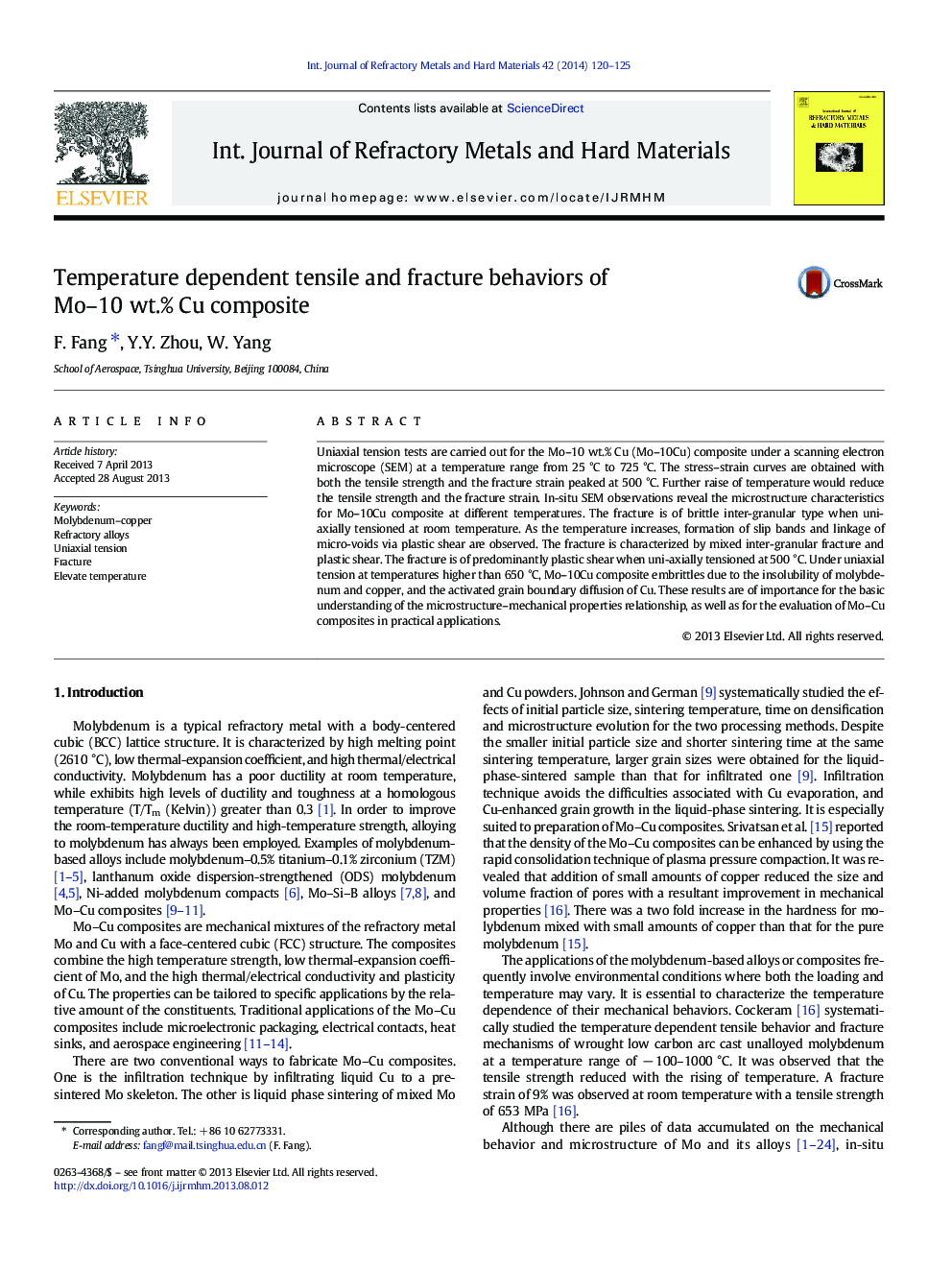| Article ID | Journal | Published Year | Pages | File Type |
|---|---|---|---|---|
| 1603355 | International Journal of Refractory Metals and Hard Materials | 2014 | 6 Pages |
•The stress–strain curves are obtained for Mo–10Cu composite at a temperature range of 25 °C−725 °C.•In-situ SEM observations reveal the crack opening and crack tip advance at different tensile stress at 25 °C.•Typical microstructure characteristics and fracture mechanisms are provided at different temperatures.•Metal embrittlement occurs at temperatures higher than 650 °C.
Uniaxial tension tests are carried out for the Mo–10 wt.% Cu (Mo–10Cu) composite under a scanning electron microscope (SEM) at a temperature range from 25 °C to 725 °C. The stress–strain curves are obtained with both the tensile strength and the fracture strain peaked at 500 °C. Further raise of temperature would reduce the tensile strength and the fracture strain. In-situ SEM observations reveal the microstructure characteristics for Mo–10Cu composite at different temperatures. The fracture is of brittle inter-granular type when uni-axially tensioned at room temperature. As the temperature increases, formation of slip bands and linkage of micro-voids via plastic shear are observed. The fracture is characterized by mixed inter-granular fracture and plastic shear. The fracture is of predominantly plastic shear when uni-axially tensioned at 500 °C. Under uniaxial tension at temperatures higher than 650 °C, Mo–10Cu composite embrittles due to the insolubility of molybdenum and copper, and the activated grain boundary diffusion of Cu. These results are of importance for the basic understanding of the microstructure–mechanical properties relationship, as well as for the evaluation of Mo–Cu composites in practical applications.
